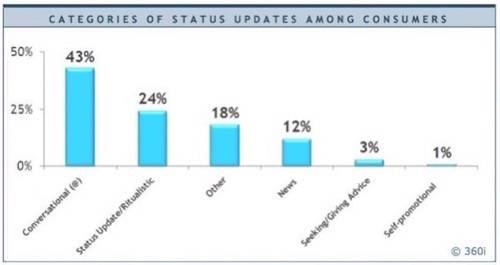As the social Web expands, it becomes continually easier for large corporations to communicate with their customers wherever they spend their time online. Facebook and Twitter have attracted big brands because that’s where the customers are, but failing to use these services to their own unique potential is just as easy as setting up an account. Some new stats released by digital agency 360i second this notion – showing that brands on Twitter are failing to truly grasp the essence of the popular micro-blogging service.

“Many brands use the channel to pass along information, but fail to capitalize on opportunities to truly connect with consumers via two-way conversations.”
– 360i
Perhaps the largest benefit of engaging customers on Twitter is the ability to have one-on-one conversations and provide personalized customer service and communication. After analyzing some 1,800 tweets sent between last October and March of this year, 360i says that while just under half of consumer tweets are conversational “@ replies,” only 1% of these are directed at brands.
“The opportunity for marketers to become part of the conversation remains vast,” the company says in its recently released whitepaper, Twitter & the Consumer-Marketer Dynamic. “For example, many brands use the channel to pass along information, but fail to capitalize on opportunities to truly connect with consumers via two-way conversations.”
360i found that 43% of tweets are conversational “@ replies” – nearly twice as much as the next highest category, “status update/ritualistic” at 24%. The agency says brands should be far more concerned with personalizing their interactions with customers on Twitter due to the inherently public nature of the service.

Its research found that a whopping 94% of tweets are personal, as opposed to being professional or self-promotional. Additionally, just 8% of Twitter users keep their tweets private, and only 15% of messages are re-tweets. This means that the vast majority of tweets are original public content that brands could be tapping to create better customer relationships.
This research supports existing theories about corporate use of social media. On a service like Twitter, brands need to communicate more personally with consumers. As the recent Old Spice video campaign showed, consumers can become enthralled by a personalized response from a big brand.
Twitter and Facebook are not just new mediums through which brands should spout the same one-way loudspeaker promotions. For startups and small businesses looking to leverage social media to improve their brand, its important to realize that each network has its own unique style of communication that works best to engage customers. Brands need to better embrace the two-way communication that can occur on these networks because as this research shows, that’s where the people are.
Photo from Flickr user respres.

















